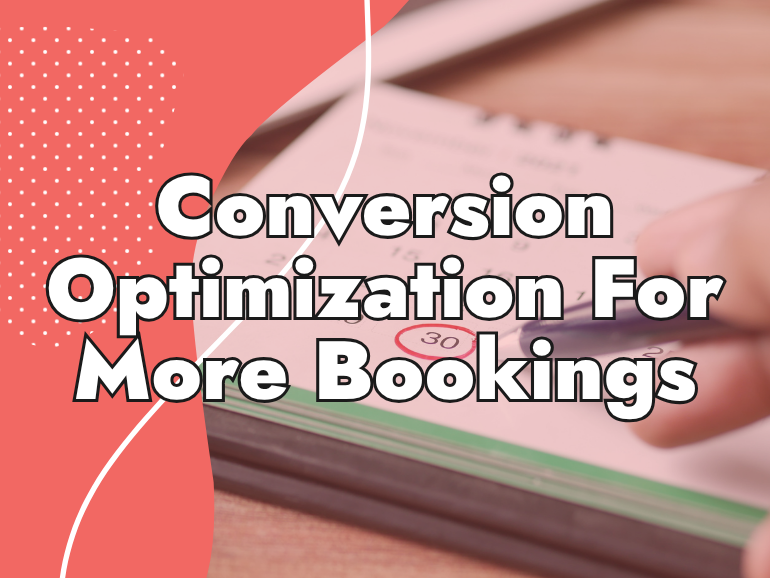SEO Competitor Analysis Tools
Curious how your competitors are outranking you? The right SEO competitor analysis tools can uncover exactly what they’re doing and what you can do better. This article highlights tools that reveal keyword gaps, backlink opportunities, and on-site strengths so you can build a smarter, more competitive SEO strategy.
Written by Carissa Krause
Last updated June 30, 2025 • First published January 16, 2023

TL;DR – How to Get the Most Out of Your SEO Competitor Analysis
- Know your competition: Using an SEO competitor analysis tool helps identify who’s ranking for your target keywords and why.
- Spy on what’s working: You can uncover your competitors’ top-performing pages, backlinks, and keyword strategies so you can reverse-engineer success.
- Find easy wins: Spot content gaps and low-hanging fruit that your competitors haven’t taken advantage of yet.
- Build a smarter SEO plan: Competitor insights fuel a stronger, data-backed strategy to boost your rankings and drive qualified traffic.
- Remember! It’s not just about rankings: Competitor analysis shows what your potential customers are seeing, learning, and comparing. Their websites help shape how you’re evaluated, so you need to make sure yours stacks up.
The Internet is a busy place, and standing out takes more than just having a great product or service. To really compete, you need a smart digital marketing strategy that starts with SEO.
That’s where SEO competitor analysis tools come in. These tools help you understand exactly what your competitors are doing to earn top rankings and how you can do it better. By digging into their keyword strategy, backlink profile, and top-performing content, you can uncover opportunities to close the gap and outperform them in search.
This guide will break down the steps for using SEO competitor analysis tools successfully. We’ll start by showing you how to properly identify your SEO competitors, analyze their SEO strategy, and create a long-term SEO game plan for your business that keeps you ahead of the competition.
Identify Your SEO Competition
Most businesses know who their biggest industry competitors are, but do you know your SEO competition? Hint: they may not be the same! Chances are, there are several SEO competitors who may not even be related to your industry but are trying to rank for the same keywords in the SERPs.
Start by developing a comprehensive list of who to focus on. Look at both your industry competitors and those who are targeting the same keywords as your business. Here’s how to get started…
- Conduct an online search for your main products and services and add any competitors with repetitive top listings.
- Search Google for your primary keywords and make note of the high-ranking domains (or enter those keywords into a competitor analysis tool to see what it discovers).
- Ask your friends, family, and clients who they consider in their decision-making process.
- Develop a list of 5-10 competitors (depending on how competitive your market is).
Consider The Strength Of The Competition and Focus Wisely
In theory, any website can outrank another for any keyword with enough time, strategy, and resources. But in reality, some competitors are so well-established that trying to beat them may not be the best use of your effort.
That’s why SEO competitor analysis tools like Ahrefs, Spyfu, and SEMrush are so valuable. They help you evaluate your competition realistically and focus on opportunities that give you the highest return on your SEO investment.
LIKE WHAT YOU’RE READING?
If these articles are helpful,
imagine what our team
can do for you!


More Traffic. Leads. Business.
I want to show you how SEO can grow your business in ways you haven’t seen before.
More Traffic. Leads. Growth.

I want to show you how SEO can grow your business in ways you haven’t seen before.
Before diving into a full analysis, take a few moments to evaluate each competitor’s overall SEO strength. Here are a few key indicators to look for — and why they matter:
- Domain Authority – Higher authority usually means more trust from search engines and more difficulty overtaking them in rankings.
- Search Engines They’re Indexed In – This shows how broad their visibility is and whether they’re active across platforms like Google, Bing, and others.
- Backlinking profile – A strong backlink profile signals credibility and ranking power. The more high-quality links they have, the harder they’ll be to outrank.
- Active Social Media Channels – Strong social presence often correlates with brand authority and referral traffic that supports their SEO.
- Traffic Sources and Volume – Knowing where their traffic comes from helps you understand which channels they’ve optimized and which gaps you can target.
- Online Directories They’re Listed In – Listings in authoritative directories can give them a boost in local SEO and organic credibility.
- Alexa Ranking – This gives a general sense of how much overall traffic they’re getting compared to other websites.
Now here’s the key: it’s important to know if a major player like Amazon ranks for one of your keywords, but that doesn’t mean you should make them your only target (unless you have unlimited resources). Instead, focus on the competitors that fall into the same general consideration set as your business. These are websites that potential customers would realistically compare you to, and that you have a much stronger chance of outranking with strategic effort.
Once you’ve narrowed your list using competitor analysis tools, move on to the next step: using this 5-step template to dig into their SEO strategy and start identifying your path to the top.
Step 1: Competitor Keyword Analysis Tools

The first step in your SEO competitor analysis is to determine what types of keywords your competitors are targeting across their website. Keyword analysis tools allow you to look at the title tags and content on key pages like their Home Page, Main Product or Service Pages, and even their About Us page.
Pay close attention to the order of keywords in each title tag — those listed near the beginning are often treated as more important by both the website owner and search engines.
Use the following checklist to guide your competitor keyword analysis:
- Identify Your Main Competitors
- List 3–5 direct online competitors (those ranking for your ideal keywords)
- Choose Competitor Keyword Tools – use at least one of the following to gather keyword data:
- Ahrefs – Site Explorer > Organic Keywords
- SEMrush – Domain Overview > Organic Research
- Ubersuggest – Enter competitor URL to get keyword data
- SpyFu – Analyze keywords your competitors rank for or buy in ads
- Moz – Keyword Explorer and On-Page Grader
- Wordtracker – Track volume and competition (free trial)
- Google Keyword Planner – Great for search volume data
- Surfer SEO – Helpful for real-time SERP analysis and on-page optimization
- Review Title Tags on Key Pages
- Home Page
- Top-Level Product or Service Pages
- About Us or Company Overview
- Remember: Look at the order of keywords. Those listed first are typically prioritized by the competitor and search engines.
- Extract Important Keywords
- Create a spreadsheet to compile keywords by competitor.
- Mark keywords used across multiple competitor sites.
- Highlight recurring phrases or brand-specific terms.
- Add Keyword Metrics
- Add monthly search volume.
- Add competition level (or keyword difficulty).
- Use color coding to highlight high-volume, low-competition opportunities.
- Identify Gaps and Opportunities
- Are there high-volume keywords your competitors missed?
- Are there niche or long-tail phrases you could rank for faster?
- Record Ranking Positions
- Note your competitors’ current rank for each keyword.
- Note your own current rank for reference and tracking.
Pro Tip: You’ll get the most bang for your buck by focusing on keywords with high search volume and lower competition. Can you identify any keywords with a high search volume that your competitors are overlooking?
Step 2: Content Competitor Analysis

Now it’s time to look at your competitors’ content. You’ll want to determine the type of content being published, how often they update it, and how this content works towards the overall branding on their website. This is an important step for getting inspiration, improving on good ideas, and filling in any gaps where important information may be missing.
Go through each website and note:
- Page Structure & Layout
- Scan the themes and keywords used in main headings (H1, H2, H3, etc.)
- Review how clearly the content is organized and if it matches search intent
- Note use of jump links, section dividers, or table of contents
- Branding & Trust Signals
- Evaluate the level of branding and visual identity throughout the content
- Look for trust indicators like author bios, dates, certifications, or client logos
- Check for About/Contact links and transparency in the business offering
- Content Type & Depth
- Identify the types of content used (e.g., service pages, blogs, case studies, FAQs, resource hubs, video)
- Assess word count and whether the content fully answers the query or just scratches the surface
- Note use of custom visuals, infographics, charts, or videos
- Internal Linking Structure & Anchor Text
- Review the internal linking structure
- Analyze how often and where they link to key pages
- Observe the anchor text used (is it keyword-rich, branded, or generic?)
- Call to Action (CTA) Strategy
- Note the CTA placement (top, mid-page, end of content)
- Evaluate how strong, clear, and relevant the CTA is to the topic
- Check if CTAs are repeated or varied across the page
- Content Freshness & Updates
- Look for the publication or last updated date
- Check for signs of stale or outdated information
- Compare with your own content’s recency
- User Engagement Elements
- Look for comment sections, share buttons, or engagement prompts
- Note if they include “related posts,” “next steps,” or lead gen forms
- Are there pop-ups, slide-ins, or chatbots enhancing interaction?
- E-E-A-T (Experience, Expertise, Authority, Trust)
- Is the author credible or linked to an expert profile?
- Is the content cited, well-researched, and accurate?
- Are authoritative sources or outbound links included?
Pro Tip: Take time to familiarize yourself with each competitor’s content strategy and not just to learn from it, but to improve on it. Identify what each one does best, then compile those strengths into a single, superior SEO approach that fills in the gaps they’ve left behind. This way, your content delivers greater value to your audience and strengthens your overall SEO strategy.
Step 3: SEO Technical Competitor Analysis Tools

It’s time to get technical… if that’s your thing. We use multiple competitor analysis tools to do a compete technical SEO audit but we’ll start you off easy with a few simple technical tests that you can do no matter your skill level!
- Google each competitor by name and look at how their website is listed. Do they use schema markup data? Do their blogs have authorship? Do they have videos or images indexed?
- Select 5-10 key website pages from each competitors and search the URL in Google. Are all of their pages being indexed?
- Do a site:url.com search function to see if Google is listing their most important pages (Home, Main Products, etc.) first. Do you see major site pages at the top or do you see less important pages first?
- If you know how to read HTML, take a peek at their source code. Does it look clean and optimized?
- Open a few pages on their website and see how long each page takes to load. Does it seem faster or slower than your website? Page speed optimization is critical to online success.
- Check for a 404 page by adding a few letters after their domain (ex. www.name.com/sdfo). Does a custom 404 page come up to redirect visitors to the website when they enter a wrong URL? Does this page look like the rest of the site?
- Check for a sitemap.xml by adding /sitemap.xml to the end of their domain name (ex. www.name.com/sitemap.xml).
- Look for an HTML sitemap in the footer of their website – these help visitors find a page they can’t see in the navigation.
Pro Tip: These seemingly small technical checks can reveal big gaps in your competitors’ SEO foundation. Use them to spot missed opportunities and to benchmark how well your own website is optimized in comparison.
Step 4: Competitor Link Analysis Tools

For this step you want to find out how popular your competitors’ websites are in the online world. You may need some additional analysis tools such as www.semrush.com.
To conduct a quick backlink analysis, consider these 3 areas:
1. Competitor Backlink Analysis
Look at the size and composition of each or your competitors’ backlinks:
- Number of backlinks – this gives you a very brief overview of their backlink profile.
- Number of unique domains – this gives you a better picture at how many sites are linking to their site (ex. Are the 4,000 backlinks coming from only one website or from 4,000 different websites?).
- Backlink profile growth rates – this tells you which competitors are steadily acquiring new backlinks and which competitors acquired the bulk of their backlinks at once (this may indicate purchased links).
- Detailed backlink analysis (if you have a detailed tool) – this breaks down which pages receive the most backlinks, what type of anchor text is used on which pages, and what percentage of links are images or no-follow links.
2. Different Types of Backlinks
Take a look at the type of websites that link to your competitors’ site. Remember that not all links are created equal. You want to determine how strong your competitions’ backlink profile is compared to yours – and see if there are any missed opportunities you can capitalize on! Here are a few things to look at:
- Forums they participate in.
- Associations and organizations they are members of.
- Conferences or events they are sponsoring.
- Blogs where they’ve written guest posts (why not inquire to guest post yourself?)
- Purchased or spam links.
3. Link Acquisition Strategy Assessment
Pay attention to how your competitors are creating new backlinks, and how quickly they’re doing it. It can be helpful to gauge how aggressively they’re working to acquire new links. Keep an eye out for these “link bait” strategies:
- Guest blog posts that promote the post on their own blog as well.
- Viral content such as videos that have potential to be linked to by many.
- Free tools or widgets that are shared across multiple websites.
- Interviews with industry leaders that are often promoted across multiple sites.
- Contests which naturally lend themselves to sharing and traffic generation.
Pro Tip: Don’t just count backlinks. Study where they’re coming from and why they were earned. High-quality links often point to valuable content or strong partnerships. Use this insight to guide your own outreach and content strategy.
Step 5: Long Term SEO Strategy Planning and Assessment
Depending on your availability and resources, it may be beneficial to monitor your competitors and revisit this checklist every 3-4 months. When you do so, examine these big picture trends:
- Are there any major new competitors?
- Have any competitors made significant changes to their website?
- Can you spot any major changes in competitor strategy?
- Are any competitors offering new services?
- Have any rankings changed significantly?
- Have any backlink profiles grown or decreased?
- Overall, how do you compare to your competitors based on these changes?
The key is to compare your SEO strategy against the competition to get a better idea at how you’re positioned. Emulate what you see working for them and avoid what isn’t!
Frequently Asked Questions
Ready To Get A Leg Up On The Competition?
We look at our clients’ websites — and their competitors’ — every day, so this kind of analysis is second nature to us. If it feels overwhelming or like something you’d rather hand off so you can focus on running your business, we’re here to help.
Contact 1st on the List or give us a call at 1-888-262-6687 to start an in-depth SEO audit of your website using many of the SEO competitor analysis tools we discussed in this article. Let’s take the guesswork out of your SEO strategy.
Carissa Krause
Carissa Krause is a Digital Marketing and Project Specialist at 1st on the List. Over the last 13+ years she has worked in our Abbotsford office with clients on a wide range of projects that include areas like local SEO, project reporting, backlink profile review, content development, strategic planning, and more. Whatever the project may be Carissa focuses on achieving greater efficiencies and putting plans into action. When away from her desk you’ll likely find her drinking all the coffee while sitting on the floor driving cars with her three young boys.
Don’t miss out – get newest posts straight to your inbox!
OTHER ARTICLES WE THINK YOU’LL ENJOY
Partner With Us. Get More Leads.
Stop trying to do it all on your own – reach out to our team and we can discuss marketing strategies that are best suited for your business!
[NO HASSLE, NO PRESSURE, NO WORRIES – JUST MEANINGFUL INSIGHTS]








